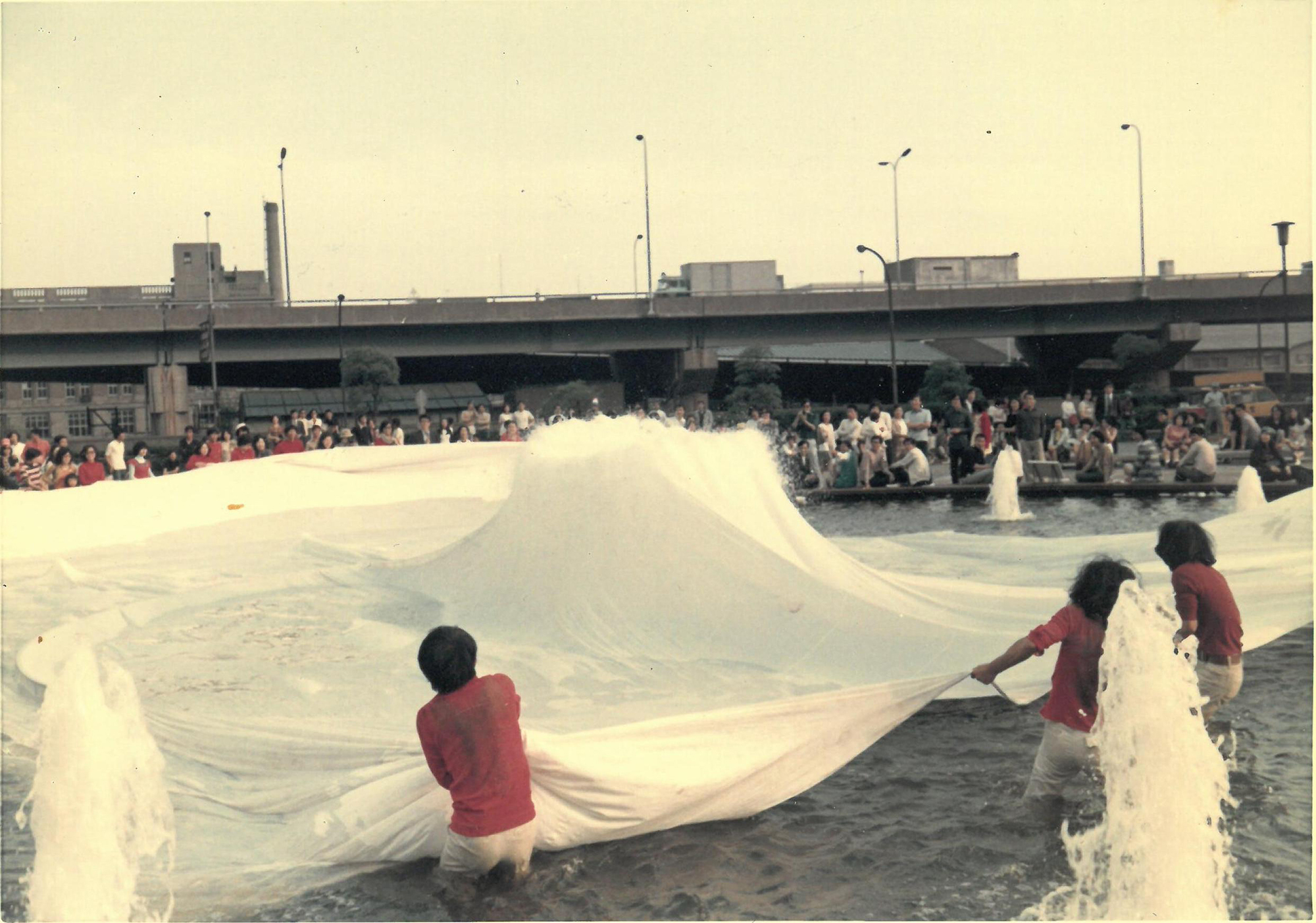Hyogo Prefectural Museum of Art's present draw card is the Saint Petersburg collection, "Old Masters from the State Hermitage Museum." But on a lower level, at the far end of a long corridor gallery, are photos and grainy videos — the small-scale documentation of one of Japan's little-known postwar happening/public-performance avant-garde groups — 0 (Group Zero). Group Zero is comparable in scope and activity, if not in longevity, to The Play, another avant-garde group that also began in Kobe a few years earlier.
Group Zero congregated in 1969 as a research group for Western-style painting within the Niki-kai, a popular Kobe-based exhibition forum. Holding misgivings about making submissions to Japan's formalized systems for public display, the group was oficially established in 1970 by Kiyoshi Furukawa, Chu Enoki and Kensaku Matsui, and had an evolving cast of participants, taking the name Japan Kobe Zero from 1972.
The year of the group's departure coincided with the 1970 World Exposition in Osaka, which showcased Japan's postwar economic and technological miracle. It was also a time synonymous with the erasing of Japan as a nation-state for Japan Inc., a global corporate brand. Period artistic expressions were diverse, though an anti-Expo element arose, characterized by mild protest-type street performances, anti-illusionism in painting and the use of increasingly unadorned materials.



















With your current subscription plan you can comment on stories. However, before writing your first comment, please create a display name in the Profile section of your subscriber account page.